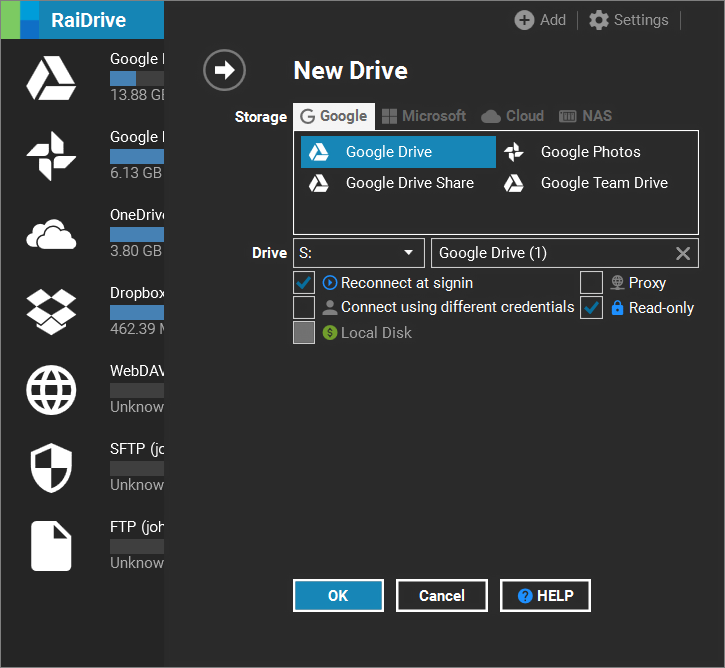


RAIDRIVE PRO FOR FREE
RaiDrive can be used for FREE using the standard license that limits users to access a limited number of drives and network storage services. The settings page allows users to set the app startup at every system boot, check for updates, and set the network proxy settings if they are needed. Every connection is represented as a new network drive, with an accompanying icon describing to which cloud service each network drive leads. Once all connections are set up, users can start accessing them either from within the dashboard or from their favorite file manager. Writable Storages Google Drive, OneDrive, Dropbox, Naver MYBOX, WebDAV, SFTP, FTP Read-only Storages Google Workspace Drive, Microsoft 365 OneDrive, SharePoint, Dropbox Business, Google Photos, Box, MEGA, pCloud, Yandex Disk, Mail.Ru Cloud Other Storages AWS, Azure, Google Cloud Platform, Alibaba, IBM Cloud, DigitalOcean, Wasabi, Naver Cloud Platform, NHN Cloud, Backblaze The app is not limited to a single storage service per user, so connection to let say multiple Google Photo accounts is completely possible. To add a new drive, users simply need to click on the “Add” button in the top-right corner of the dashboard, pick one of the offered cloud storage solutions, chose a Drive letter, rename the drive name, and enter the login credentials. Once installed, users will have to configure their cloud storage connection. RaiDrive is distributed online as an installer that can be easily deployed on any modern desktop or laptop PC running modern Windows OS (starting with Windows 7). With RaiDrive installed on the PC, cloud storage solutions become just one click away. Built from the group up to be simple to use, fast, reliable, and highly convenient, RaiDrive can serve not only users that use popular cloud storage services such as Google Drive, OneDrive, Dropbox, Google Photos, and many others but can also work with FTP and SMTP locations. RaiDrive is a lightweight storage plugin application that can unify many popular cloud storage services and simplify access to them by mapping them as regular network drives that are accessible straight from the File Explorer or any other file manager app.


 0 kommentar(er)
0 kommentar(er)
